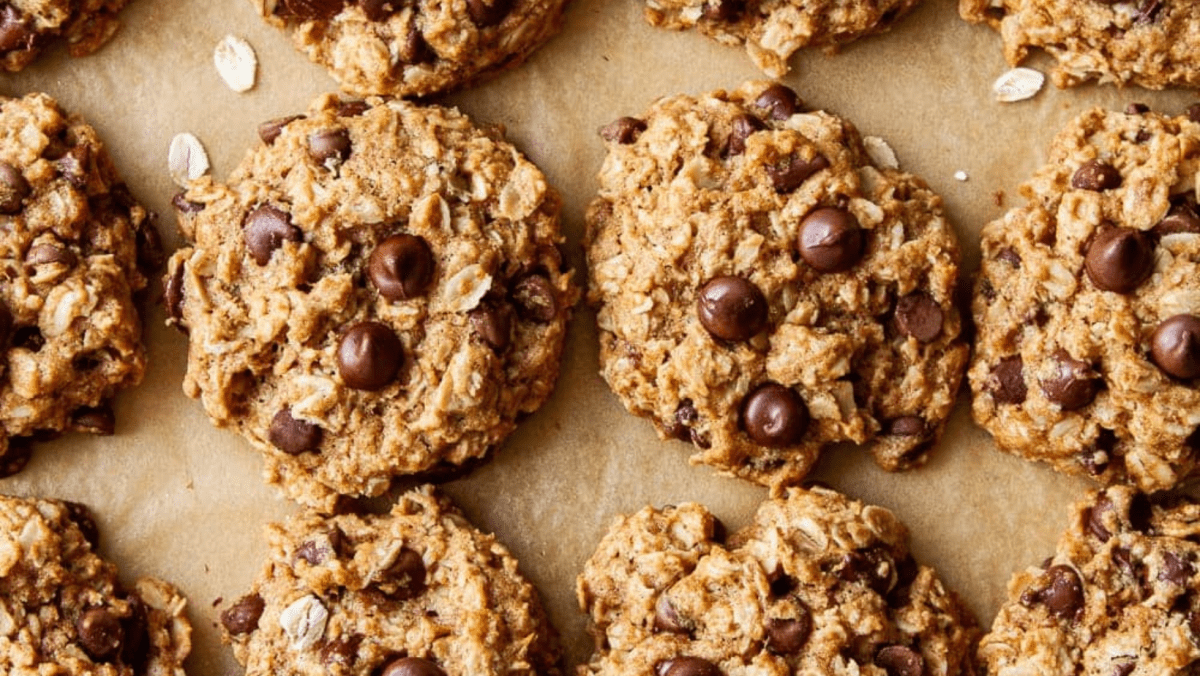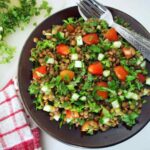Dive into a world of delicious and adaptable cookie recipes! “Quick Flexitarian Cookies for Every Occasion” explores a vibrant collection of versatile cookie creations, perfect for birthdays, holidays, or a simple afternoon treat. Each recipe emphasizes fresh, high-quality ingredients, offering a delightful balance of flavor and nutritional value. Whether you’re a seasoned baker or a kitchen novice, these recipes are designed for ease and success, with helpful tips and substitutions to cater to various dietary needs and preferences. Prepare to be inspired by the stunning visuals and the delightful array of flavors awaiting you.
From the rich, decadent chocolate indulgence of a holiday cookie to the light and refreshing zest of a summer berry creation, this guide offers a spectrum of cookie experiences. Learn to master the art of perfectly textured dough, the secrets to achieving golden-brown edges, and the satisfying crunch that defines a truly exceptional cookie. Discover the joy of creating personalized treats, tailored to your taste and the occasion, making every bite a memorable experience.
Step-by-Step Baking Instructions
These instructions detail the baking process for our delicious Oatmeal Cranberry Quick Flexitarian Cookies, emphasizing ease and clarity. Each step includes potential challenges and solutions, along with tips for optimal results. Remember to preheat your oven to 375°F (190°C) before beginning.
Oatmeal Cranberry Quick Flexitarian Cookie Baking Process
- Combine Dry Ingredients: In a large bowl, whisk together 1 ½ cups rolled oats, ½ cup all-purpose flour, ½ teaspoon baking soda, ½ teaspoon ground cinnamon, ¼ teaspoon salt, and ½ cup brown sugar. The dry ingredients should be thoroughly combined to ensure even baking and distribution of flavor.
- Combine Wet Ingredients: In a separate bowl, whisk together ½ cup unsweetened applesauce, ¼ cup maple syrup, 1 teaspoon vanilla extract, and ¼ cup milk (dairy or non-dairy). The wet ingredients should be well blended to create a smooth, consistent mixture.
- Combine Wet and Dry Ingredients: Gradually add the wet ingredients to the dry ingredients, mixing gently until just combined. Be careful not to overmix, as this can lead to tough cookies. A few small lumps are acceptable.
- Fold in Cranberries and Nuts (Optional): Gently fold in ½ cup dried cranberries and ½ cup chopped walnuts or pecans (optional). The additions should be incorporated evenly throughout the dough.
- Scoop and Bake: Drop rounded tablespoons of cookie dough onto ungreased baking sheets, leaving about 2 inches between each cookie. Bake for 10-12 minutes, or until the edges are golden brown and the centers are set. Baking time may vary slightly depending on your oven.
- Cool and Enjoy: Remove the baking sheets from the oven and let the cookies cool on the sheets for a few minutes before transferring them to a wire rack to cool completely.
Potential Challenges and Troubleshooting
Understanding potential issues during baking allows for proactive solutions and ensures a successful outcome.
- Problem: Cookies are spreading too thin during baking.
Solution: Chill the dough for at least 30 minutes before baking. This firms up the dough, preventing excessive spreading. - Problem: Cookies are burning on the edges before the centers are cooked through.
Solution: Reduce the oven temperature by 25°F (15°C) and/or check for doneness a minute or two earlier. Consider using a baking sheet with darker color for even baking. - Problem: Cookies are dry and crumbly.
Solution: Increase the amount of applesauce or milk slightly in the next batch. You could also use a softer brown sugar. - Problem: Cookies are underbaked and gooey in the center.
Solution: Increase baking time by 1-2 minutes and check for doneness more frequently.
Tips and Tricks for Optimal Results
These tips will help you achieve perfectly baked cookies every time, regardless of your oven or ingredient availability.
- Ingredient Substitutions: For a nut-free version, omit the nuts entirely. Other dried fruits, such as raisins or chopped apricots, can be substituted for the cranberries. Sunflower seed butter can replace the applesauce, but may slightly alter the texture and flavor.
- Oven Adjustments: Ovens can vary in temperature. If your cookies are consistently burning or underbaking, adjust the temperature accordingly. Using a reliable oven thermometer can be helpful in determining the true oven temperature.
- Baking Sheet Material: Darker baking sheets absorb heat more quickly than lighter ones, potentially leading to faster baking times. If using dark sheets, reduce the baking time slightly.
- Cooling Technique: Allowing cookies to cool completely on a wire rack prevents them from becoming soggy. The air circulation helps to evenly distribute the moisture.
Ingredient Sourcing and Substitutions

Crafting exceptional flexitarian cookies hinges on the quality of your ingredients. The flavors and textures you achieve are directly related to the freshness and inherent characteristics of each component. Careful sourcing and thoughtful substitutions allow for both delicious results and dietary adaptability.
Prioritizing high-quality ingredients enhances the overall sensory experience. Using seasonal produce ensures peak flavor and nutritional value, contributing to a richer and more satisfying cookie. Similarly, thoughtfully selecting your flours, sugars, and fats impacts the texture and overall quality of your baked goods.
Key Ingredient Sourcing
Sourcing high-quality ingredients is crucial for achieving optimal flavor and texture in your flexitarian cookies. The following points highlight the importance of selecting the best possible ingredients.
- Flour: Opt for organic, stone-ground flours whenever possible. These flours often retain more of the grain’s natural nutrients and possess a richer flavor profile compared to mass-produced alternatives. Look for flours that are locally sourced to support your community and reduce your carbon footprint.
- Sugar: Choose unrefined sugars like coconut sugar or maple sugar for a more complex flavor and a slightly lower glycemic index compared to refined white sugar. The subtle caramel notes of these sugars complement the other ingredients beautifully.
- Butter/Oil: High-quality butter imparts a rich, creamy flavor and texture. If using oil, opt for extra virgin olive oil or avocado oil for their unique flavor profiles and health benefits. Consider the melting point of your chosen fat; a higher melting point will result in a firmer cookie.
- Chocolate: Select high-percentage dark chocolate for a more intense, bittersweet flavor. The quality of the chocolate significantly impacts the overall taste of the cookies. Look for chocolate with a high cocoa content and minimal added sugar.
- Fruits and Nuts: Choose seasonal fruits and nuts for optimal flavor and freshness. Locally sourced options often provide the best taste and support local farmers.
Ingredient Substitutions
Adapting recipes to accommodate dietary restrictions or preferences is easily achievable with the right substitutions. The table below details common substitutions and their impact on the final product.
| Ingredient | Substitution | Impact on Taste, Texture, and Nutritional Value |
|---|---|---|
| Butter | Applesauce, Vegan Butter, Coconut Oil | Applesauce yields a slightly denser, moister cookie with a subtle sweetness. Vegan butter offers a similar taste and texture to traditional butter. Coconut oil adds a distinct coconut flavor and can make the cookies slightly more fragile. Nutritional value varies depending on the substitution. |
| Eggs | Flax eggs (1 tbsp flaxseed meal + 3 tbsp water), Applesauce, Mashed Banana | Flax eggs provide binding but can slightly alter the texture, making the cookies slightly denser. Applesauce and mashed banana add moisture and sweetness, potentially altering the texture and flavor profile. Nutritional value changes depending on the substitute. |
| All-Purpose Flour | Gluten-Free Flour Blend, Almond Flour, Oat Flour | Gluten-free flour blends provide a similar texture to all-purpose flour, although the result might be slightly more crumbly. Almond flour creates a denser, chewier cookie with a distinct nutty flavor. Oat flour produces a slightly denser and more moist cookie with a subtle oat flavor. Nutritional value varies depending on the substitution. |
| White Sugar | Brown Sugar, Coconut Sugar, Maple Sugar | Brown sugar adds moisture and a caramel-like flavor. Coconut sugar and maple sugar contribute a more complex flavor profile and slightly lower glycemic index. |
With “Quick Flexitarian Cookies for Every Occasion,” baking becomes an adventure, a journey filled with creativity and delicious rewards. The recipes within offer more than just instructions; they provide a framework for culinary exploration, encouraging experimentation and the confident creation of personalized treats. So gather your ingredients, preheat your oven, and embark on a baking experience that is as rewarding as it is delightful. The satisfying aroma of freshly baked cookies and the happy faces of those you share them with are the ultimate testament to the joy of baking.
User Queries
Can I freeze these cookies?
Yes! Freeze unbaked cookie dough for future use or bake and freeze cooled cookies for up to 3 months. Wrap them tightly to prevent freezer burn.
What if my cookies spread too thin during baking?
Chill your dough thoroughly before baking. Use a cookie scoop to ensure uniform size and prevent over-spreading. Slightly reduce baking time if necessary.
Can I use different types of flour for substitutions?
Yes, but the results may vary. Using a gluten-free blend will change the texture. Experiment to find what works best for you. Note the changes in the recipe instructions.
How can I make these cookies even more nutritious?
Incorporate more whole grains, add seeds like chia or flax for extra fiber and omega-3s, and use less refined sugar.


